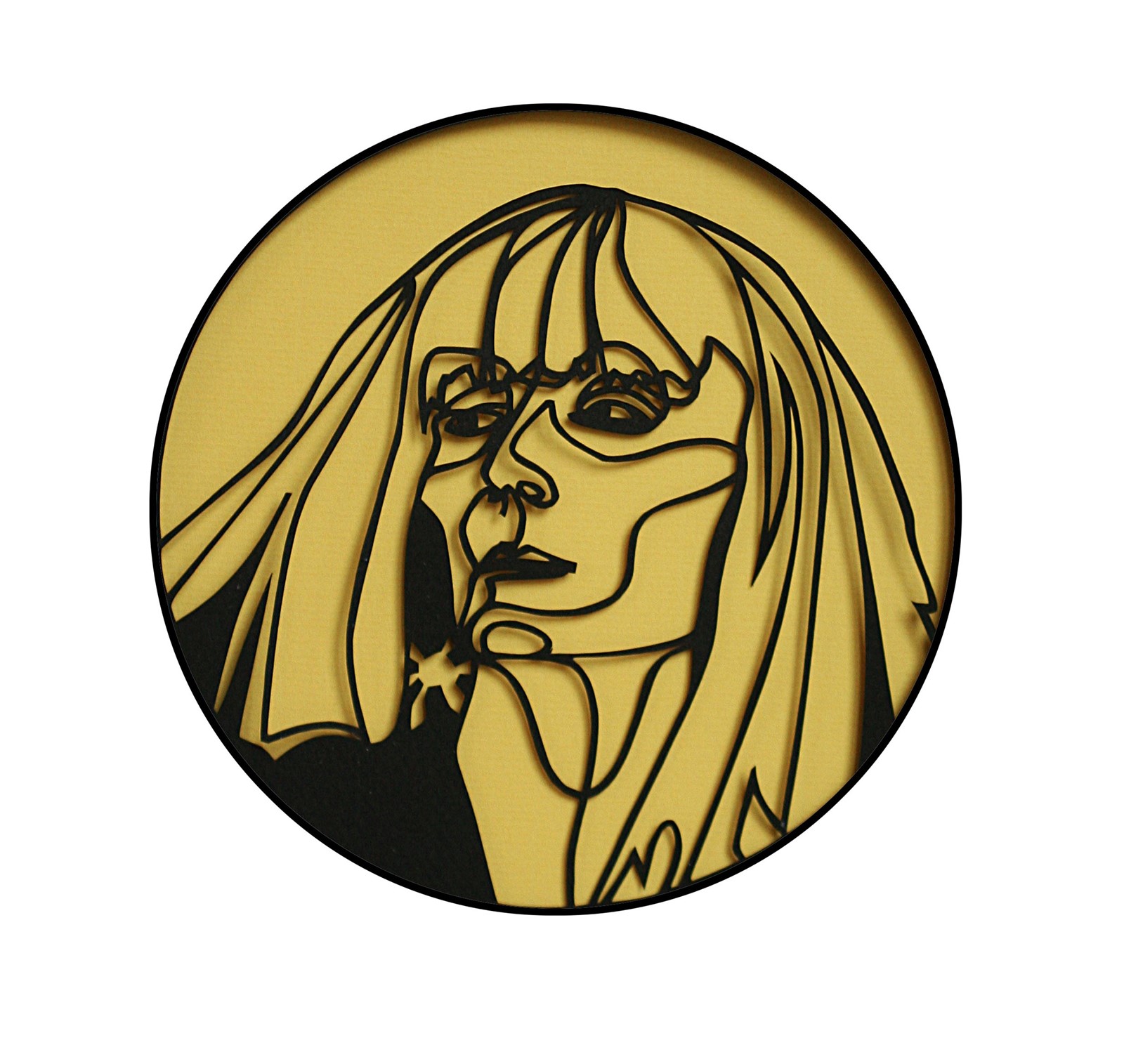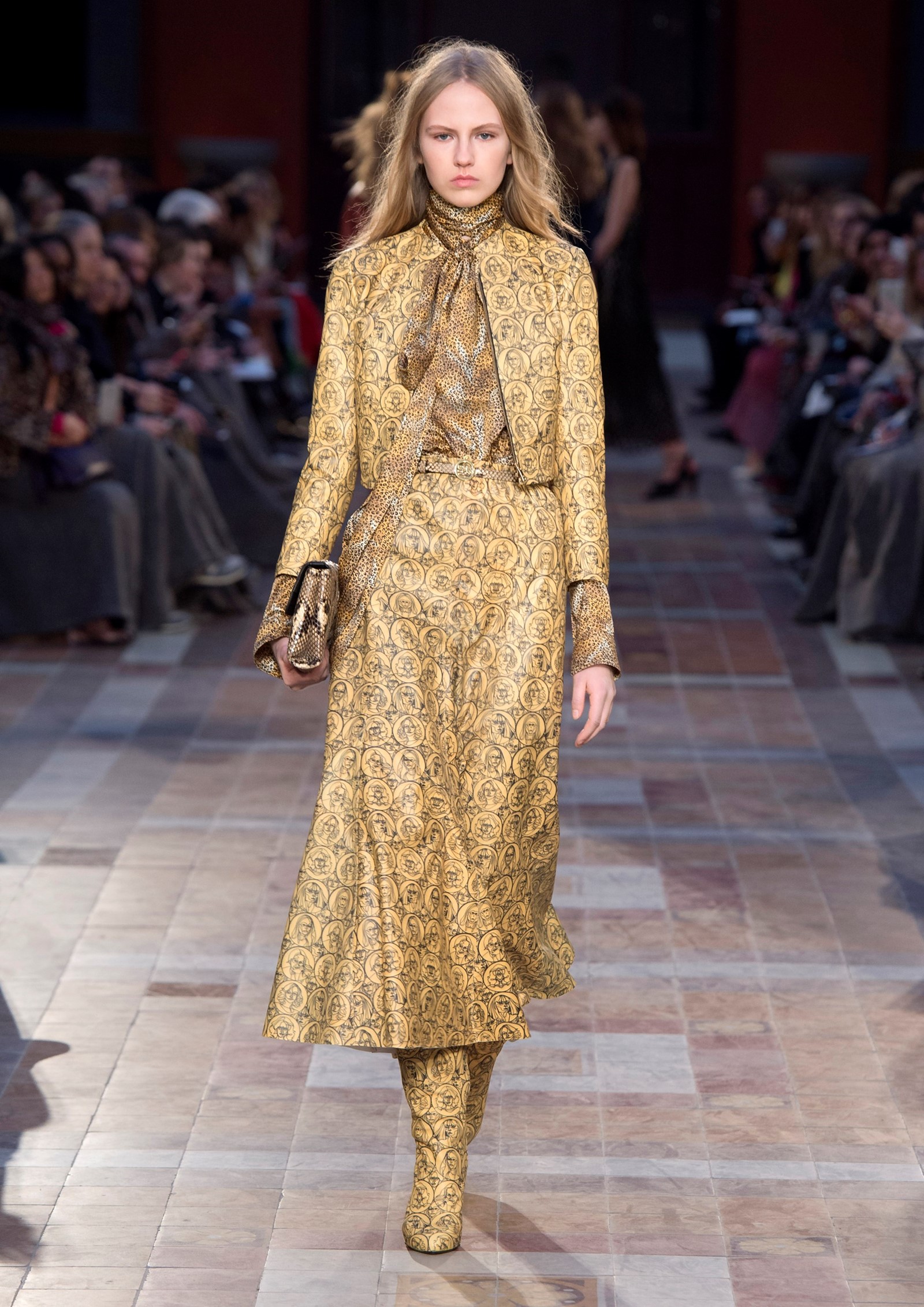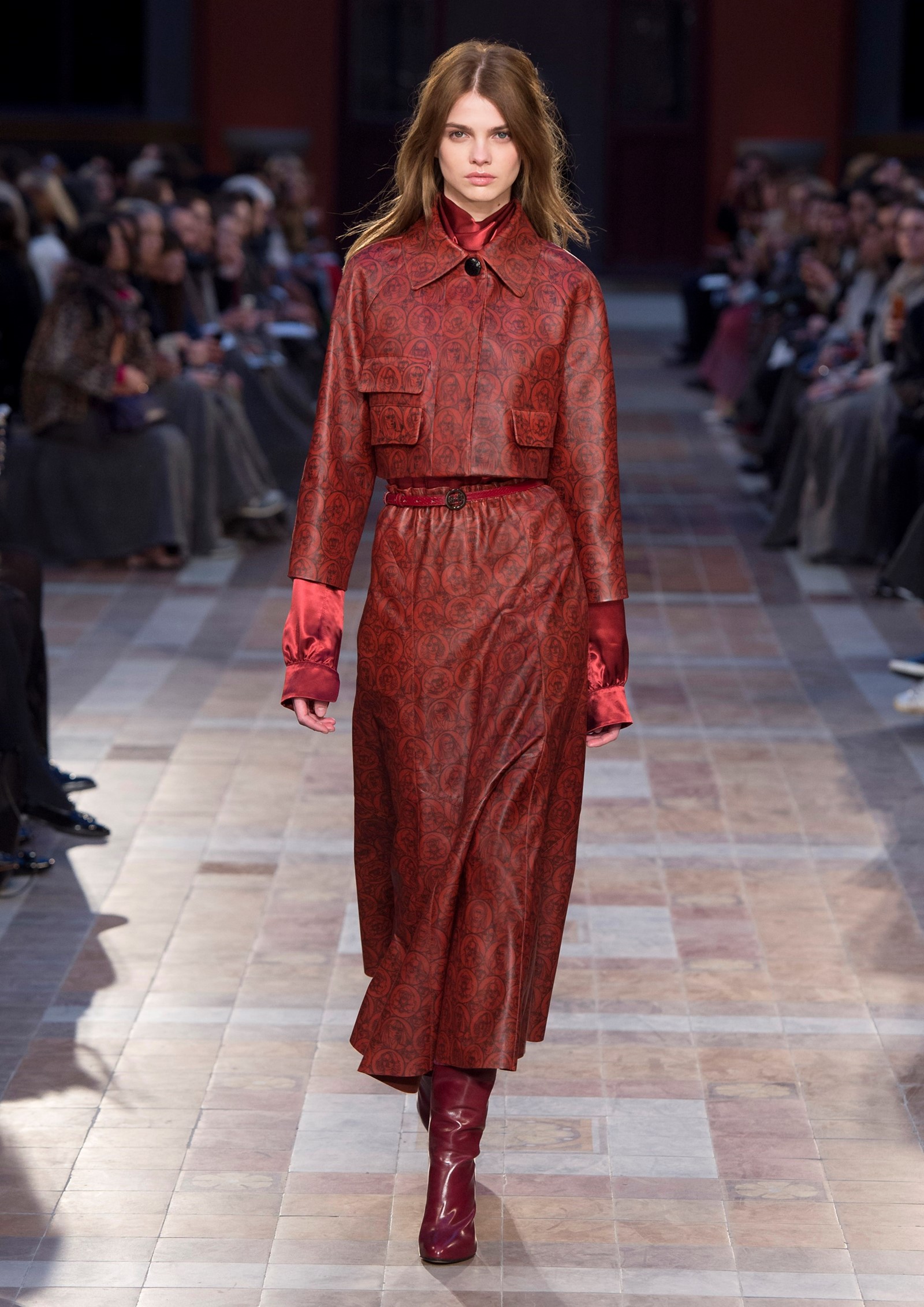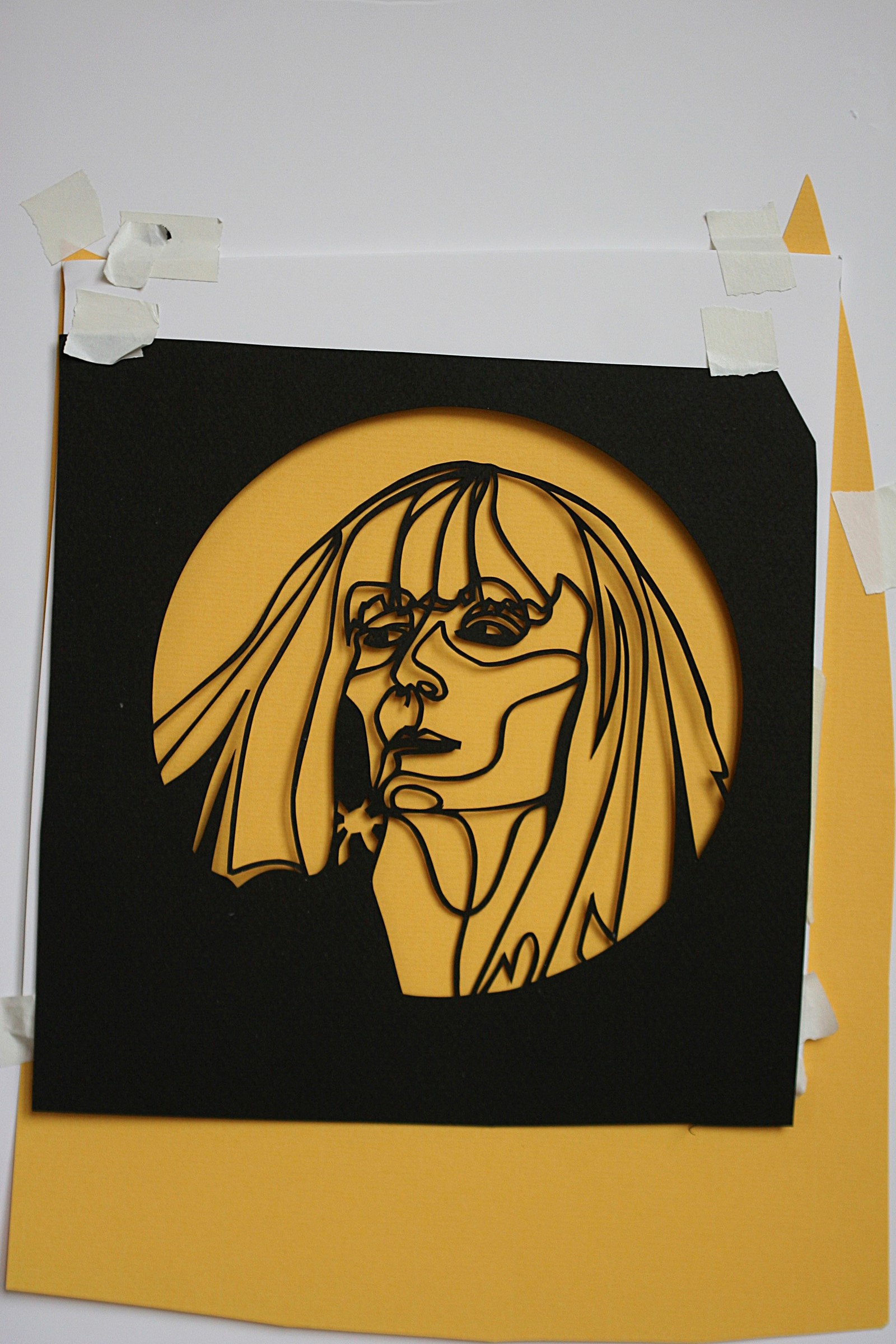The French house of Sonia Rykiel was fashioned upon the pillars of family and free-spirited femininity, which have suffused its jolie sensibility since it was established in 1968. For Autumn/Winter 2016, the esteemed label – which has operated under the steer of creative director Julie de Libran since 2014 – celebrated these codes with a custom print, created in collaboration with contemporary Spanish-American artist Maggie Cardelús. The design comprised a series of intricate paper cut-outs which depicted the faces of the women at the heart of the brand, including its late, great founder Sonia Rykiel, her daughter Nathalie, and Nathalie’s daughter Lola, in addition to de Libran and Cardelús themselves.
“Julie and I first met many years ago in Milan, through my gallerist Francesca Kaufmann,” says Cardelús of her first interaction with the designer, who admired her broad and evocative repertoire. “[Earlier this year] She asked me to work on a project for Sonia Rykiel. Our conversations were very harmonious and productive, so an exchange of ideas became an invitation to work on the A/W16 collection, which became a series of print designs, as well as the invitation for the show,” she explains. For Cardelús, who is now based in Paris, working within the remit of luxury fashion was something of a novelty. In fact, she had long considered the genre to be a “peripheral phenomenon,” explaining, “I paid more than casual attention to it, and thought about it, but wasn't involved in it, so it was fascinating to work with someone, like Julie, who lives it so deeply.”

De Libran’s intention was clear from the outset: to create a print that reflects “the strength between women in conversation, the thoughts, the exchanges, the values that go through women's heads when they dress.” To her, the artwork provided an essential component in her A/W16 offering – a clarion call to “bring together this community of women and their ideas”. The prints played out on fluid silk dresses, scarves, drawstring trousers, pointed boots, soft leather skirts and jackets, adding further artistic merit to a rich palette of ochre, pewter and burgundy. “We wanted the fabrics to be worn as a badge of honor by women who might identify and feel good to be a part of a label, and a collection, made by women collaborating together,” notes Cardelús, adding, “women who would understand the bold move of putting our own portraits in the design – a move that resists the historical anonymity of women's work”.


The collaboration proved to enlighten both women. “I was immensely impressed by Julie in many ways,” reveals Cardelús. “She has a gentle, respectful, thoughtful manner that belies her resilience, an intrepid work ethic, and remarkable lucidity. She listens to others and doesn't mind questioning herself, and somehow brilliantly navigates the complex and challenging tasks of her position.” De Libran similarly mused about Cardelús’ unique approach to the task in hand, offering, “I loved being able to understand her creative process and analysis, and sharing our different and similar worlds in creativity.”
While there are no concrete plans to align their talents again thus far, their experimental union has certainly made a mark, as Cardulús concludes, “I think that just being with her rubbed some of her magic onto me – my friends tell me I dress better since I started working with her…”
